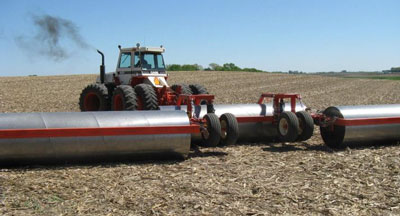future_vision
Gold Member
I have some land where we have a slope that we need to back fill to get up to level with the grade around the house to extend the usable area. I'm thinking I am going to need to add soil in lifts and do some compaction so the new fill doesn't just slough off. Buying or renting something seems prohibitively expensive so I thought I might build something. My thought that it could be a roller. I have a Kioti DK6010SE which should be able to pull a good amount of weight. Ideally, I think this roller should be at least the width of the tires from side to side.
- Is a roller the best idea for this application?
- What would you recommend for a DIY roller that can be pulled my tractor?
- If a roller is not best what are my options?


